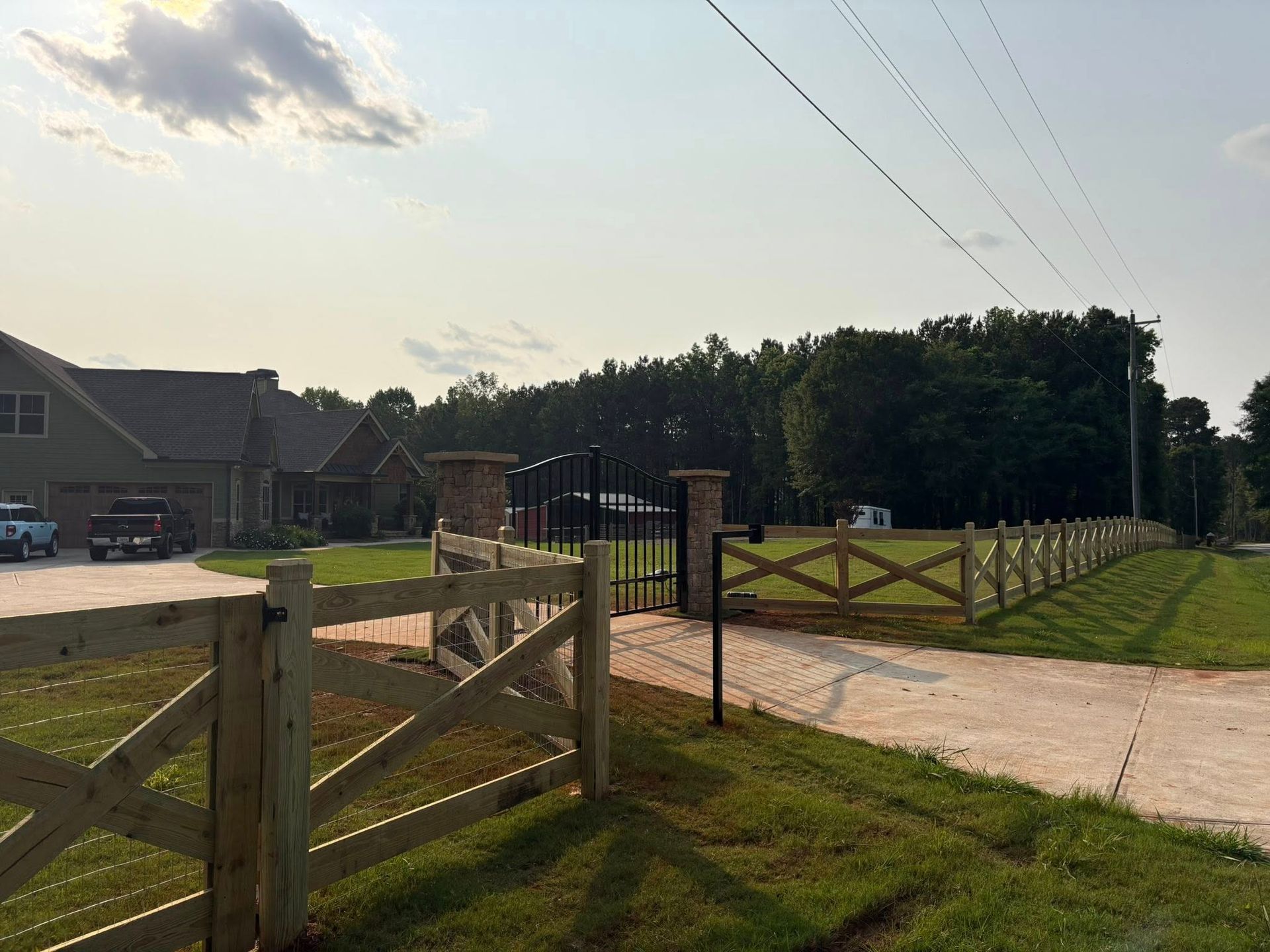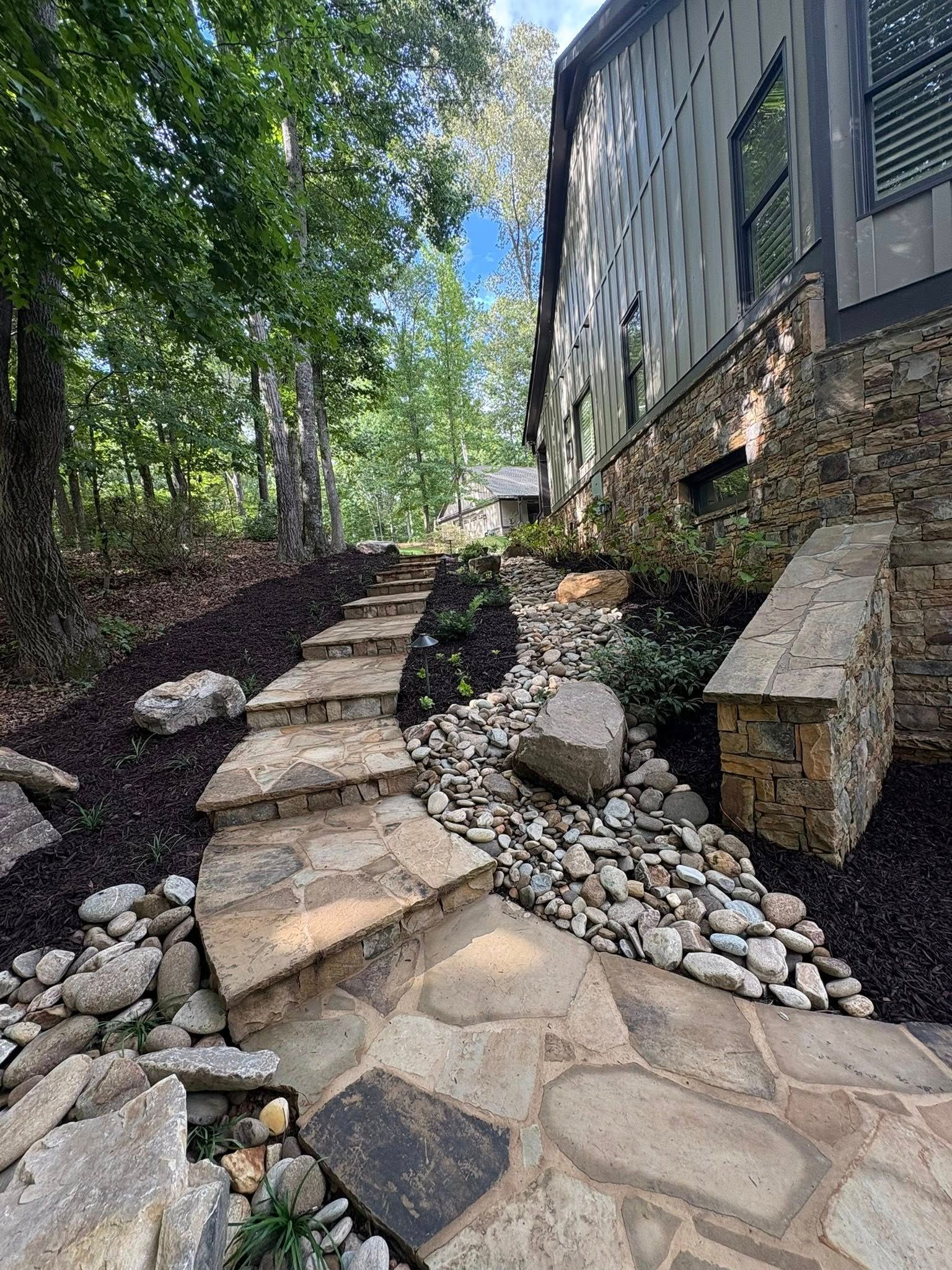SPRING DRAINAGE PREP: How to prevent yard flooding
Essential Tips to Keep Your Lawn Dry and Flood-Free This Spring
As spring approaches, homeowners in Georgia must prepare for heavy rains that can lead to standing water, soil erosion, and even foundation damage. Poor drainage can turn your beautiful yard into a muddy mess. The good news? With proper planning and expert solutions, you can prevent yard flooding and keep your landscape in top shape. Here’s how DRLscape LLC can help you prepare your property for spring rain.
Signs of Poor Drainage in Your Yard
Before tackling drainage issues, it’s essential to identify problem areas. Here are some common signs that indicate your yard needs better drainage:
- Standing water that remains for hours or days after a rainstorm
- Erosion and washed-out mulch or soil in garden beds and slopes
- Soggy, muddy patches in your lawn that won’t dry out
- Water pooling near your foundation, increasing the risk of damage
- Dead or struggling plants due to excessive water saturation
If you notice any of these issues, it’s time to take action before spring rains make them worse.
Best Drainage Solutions for Your Landscape
At DRLscape LLC, we offer a variety of professional drainage solutions tailored to your property’s specific needs. Here are some of the best ways to manage excess water and prevent flooding:
1. Install a French Drain System
A French drain is a gravel-filled trench with a perforated pipe that redirects water away from problem areas. This is an excellent solution for properties with poor soil drainage or low-lying areas where water collects.
2. Improve Grading & Sloping
Your yard’s slope plays a crucial role in water management. If your landscape isn’t graded properly, water will pool instead of flowing away from structures. Our experts can adjust your lawn’s grading to direct runoff away from your home and into appropriate drainage areas.
3. Use Dry Creek Beds for Natural Drainage
A dry creek bed is a decorative yet functional solution for excess water. This rock-lined trench mimics a natural waterway, helping to guide runoff efficiently while enhancing the aesthetic appeal of your yard.
4. Install Catch Basins & Channel Drains
For properties with driveways or patios that collect water, catch basins and channel drains can help redirect runoff and prevent puddling. These systems capture excess water and move it to a safer location.
5. Downspout Extensions & Rain Gardens
Water from gutters and downspouts can contribute to yard flooding if not managed properly. Downspout extensions direct water farther away from your home, while rain gardens help absorb and filter excess water using native plants.
Spring Drainage Prep: What You Can Do Now
While professional drainage solutions are the best way to ensure lasting results, here are some quick steps you can take right now to prepare for spring:
- Clean your gutters and downspouts to prevent clogs and overflow.
- Check existing drainage systems for blockages or damage.
- Aerate your lawn to improve soil drainage and reduce compaction.
- Add mulch and ground cover plants to help absorb excess moisture.
Schedule a Free Drainage Consultation with DRLscape LLC
Don’t wait until spring rains flood your yard—get ahead of the problem with expert drainage solutions from DRLscape LLC. Our team specializes in customized landscape drainage services for homeowners in Dacula, Flowery Branch, and surrounding areas.
Contact us today for a free consultation and let us help you keep your yard dry and beautiful this spring!




